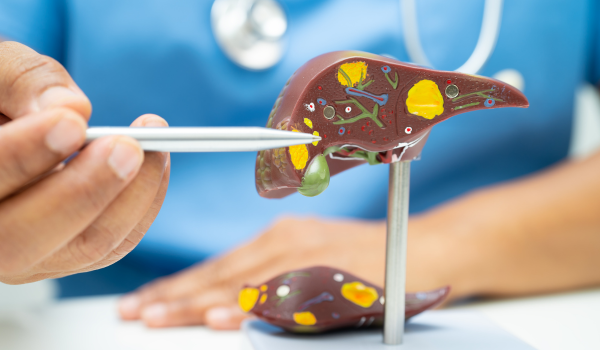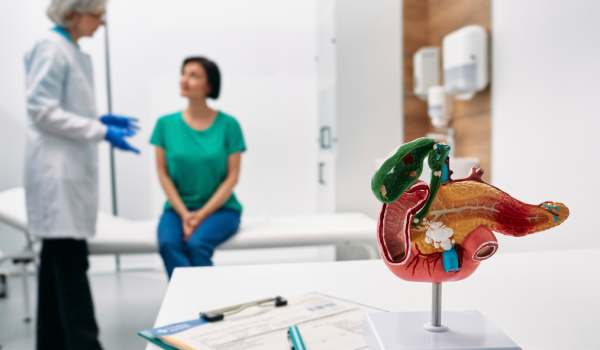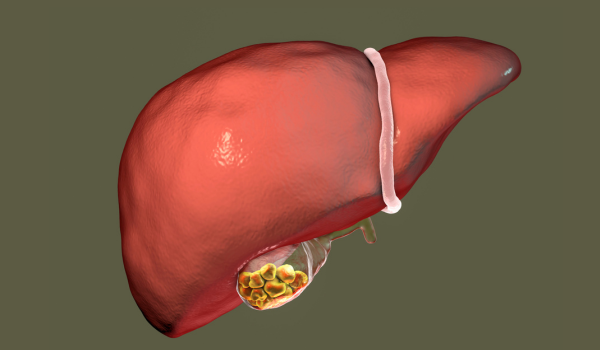Gallstones are hardened deposits of calcium and cholesterol that form in the gallbladder. They can range in size from tiny grains of sand to as large as golf balls. Gallstone attack symptoms often include sudden pain after eating, nausea, and vomiting if a stone blocks bile flow into the small intestine.
Gallbladder problems are common, affecting about 10–15% of people in the United States. Gallstones are most frequently seen in adults over 40, individuals who are overweight, and women.
Abdominal Pain
One of the most common symptoms of gallstones is abdominal pain, also called biliary colic. Gallstones can cause the gallbladder to spasm if they block the passage to the duodenum (the upper small intestine).
You may feel sharp pain in the upper right side of the abdomen. This discomfort may last 30 minutes or longer and usually does not improve with over-the-counter pain relievers. Pain often occurs after eating fatty foods, particularly in the evening or at night. Consistent pain after meals may indicate symptomatic gallstones.
Nausea and Vomiting
Gallstones can trigger intense nausea, which sometimes leads to vomiting. These symptoms often arise after eating and may last several hours before subsiding. Nausea and vomiting can also signal complications, making it important to seek medical attention if these symptoms persist.
Fever
A low-grade fever may appear during a gallstone attack and can indicate infection or inflammation of the gallbladder. Sweats and chills may accompany the fever. Because fever may be a sign of more serious conditions, it should not be ignored—especially when combined with other symptoms.
Jaundice
Jaundice occurs when bilirubin levels rise in the blood, turning the skin and eyes yellow. Bilirubin is a yellow pigment created when old red blood cells are broken down. If gallstones block bile flow in the gallbladder or liver, bilirubin builds up in the body, causing jaundice.
Jaundice can also be a warning sign of liver problems such as cirrhosis or hepatitis.
Sudden Weight Loss
Gallstones are not a direct cause of sudden weight loss, but both obesity and rapid weight loss increase gallstone risk. When you lose weight too quickly, the liver produces bile with higher cholesterol content, which can encourage gallstone formation.
People who undergo weight loss surgery also face a higher likelihood of developing gallstones. For those planning to lose weight, gradual and steady weight management is safer and helps lower gallstone risk.
Silent Gallstones
More than 80% of people with gallstones have no symptoms. Many only discover gallstones during a medical checkup.
Diagnostic tests that can identify gallstones include blood tests, ultrasound, CT scans, MRI, ERCP, X-rays, and cholescintigraphy.
When To Contact a Healthcare Provider
Only a small percentage of people with gallstones develop complications. However, silent gallstones may eventually cause symptoms. Consult a healthcare provider if you know you have gallstones to prevent future attacks.
Seek immediate medical attention if you experience:
-
Fever or chills
-
Gallbladder pain lasting several hours and unresponsive to OTC medication
-
Jaundice
-
Light-colored stools
-
Nausea and vomiting
-
Dark brown urine
Questions To Ask Your Provider
If you are diagnosed with gallstones, you may want to ask your healthcare provider:
-
Can gallstones resolve without treatment?
-
Do I need gallbladder removal surgery if I have a gallbladder attack?
-
What can I do to manage abdominal pain from gallstones?
-
Which dietary or lifestyle changes can help prevent gallstones?
A Quick Review
Gallstones are often harmless but may cause painful symptoms such as abdominal pain, nausea, vomiting, fever, or jaundice. Prompt medical care is essential to reduce complications.
If you have gallstone symptoms, seek advice from a healthcare provider. They can guide you through treatment options and lifestyle adjustments to help prevent attacks and protect your long-term digestive health.





